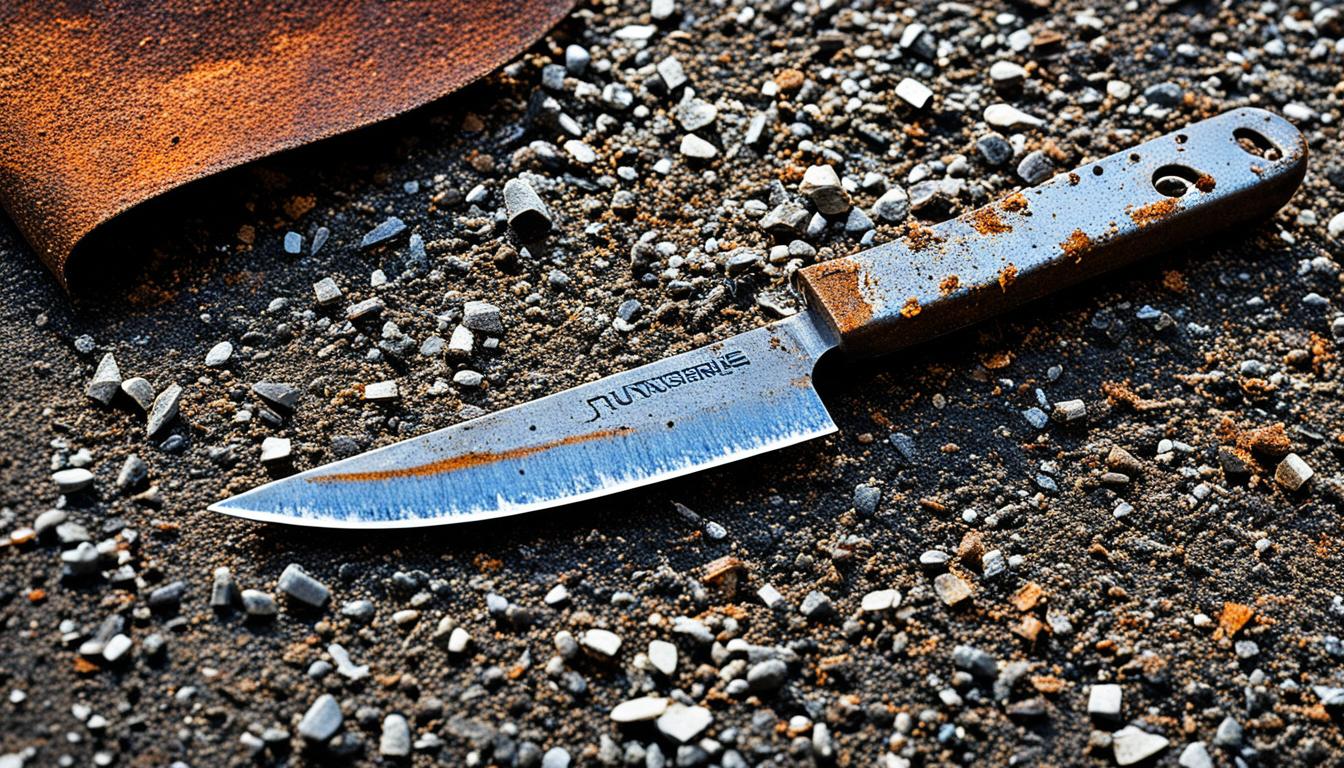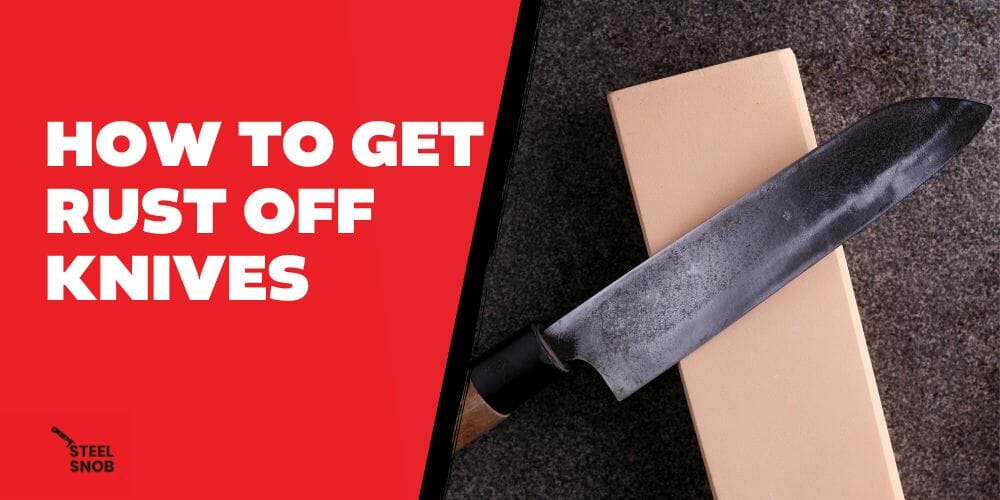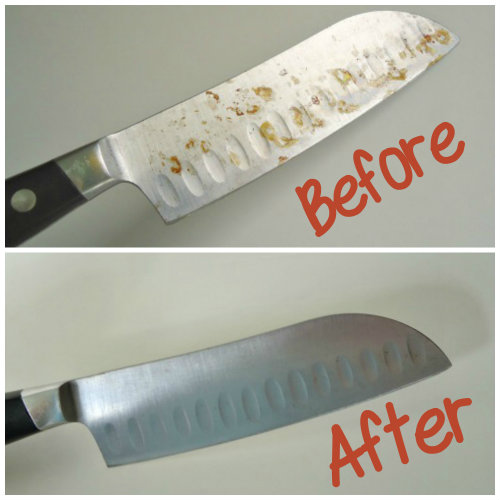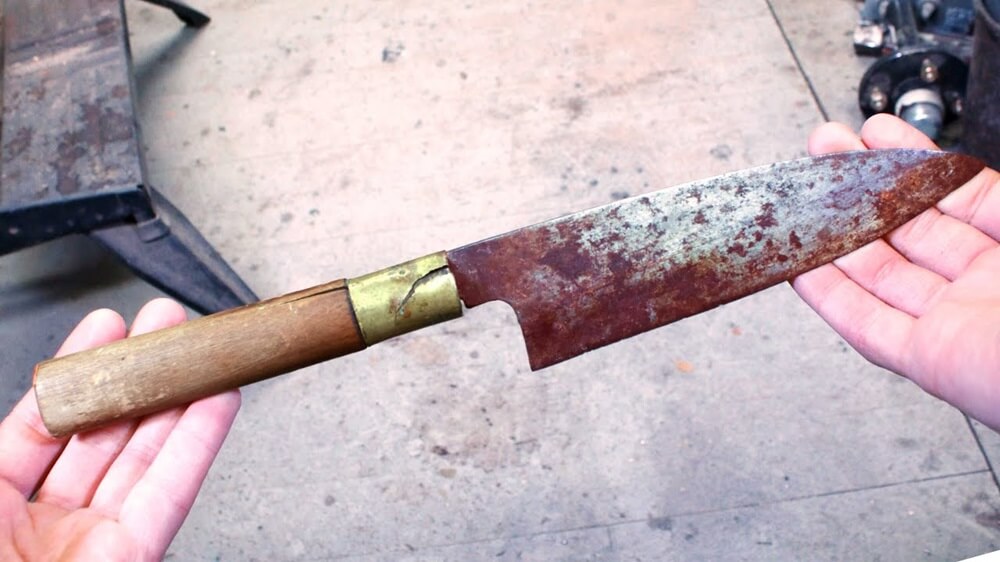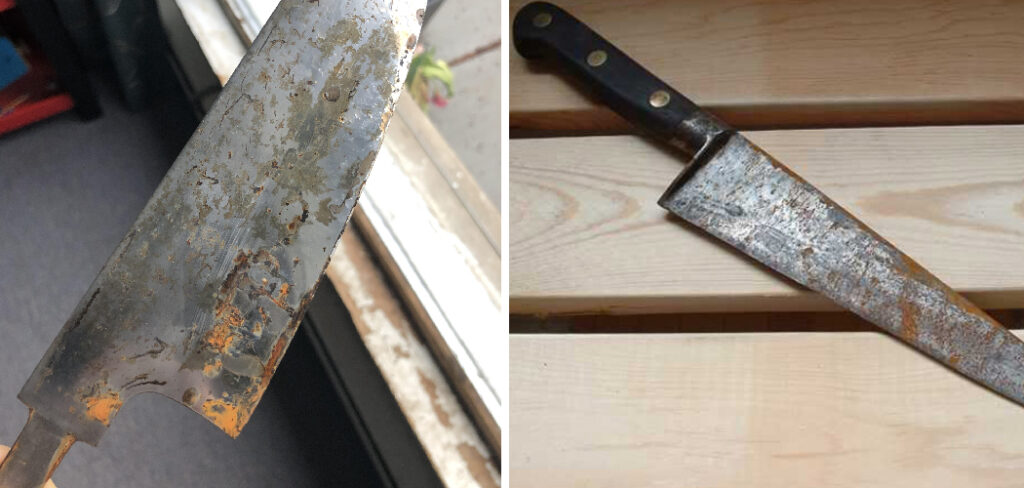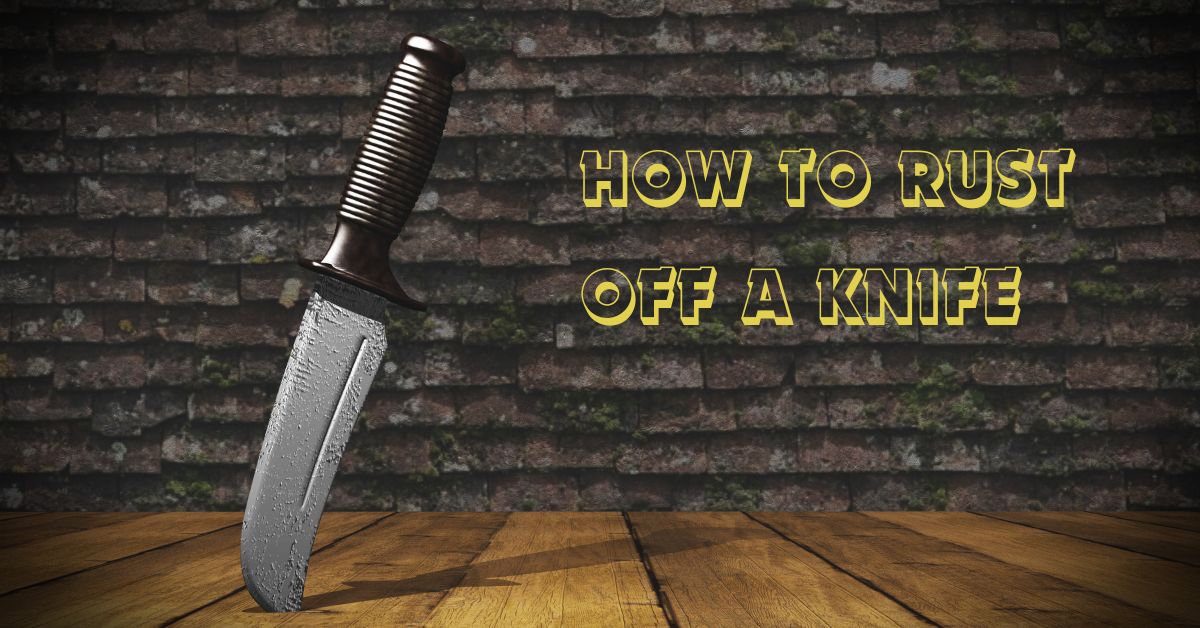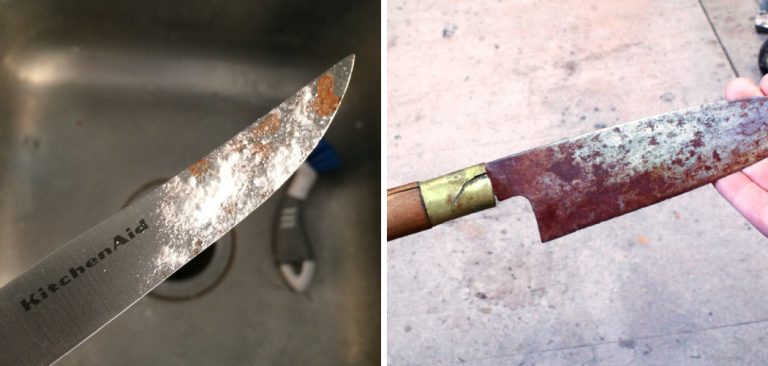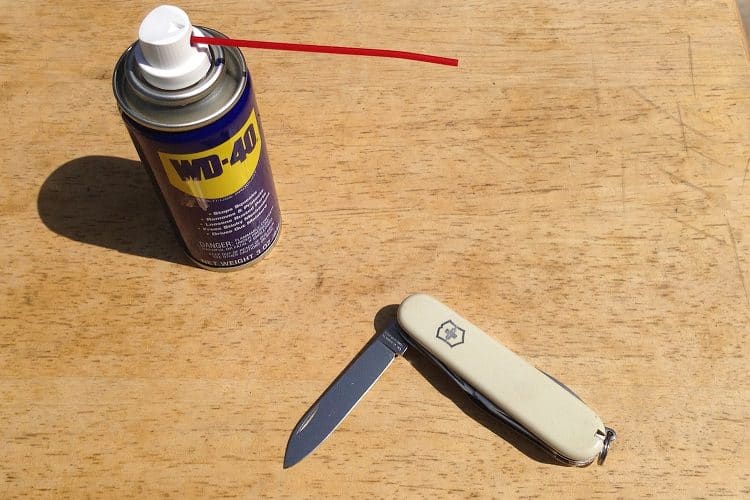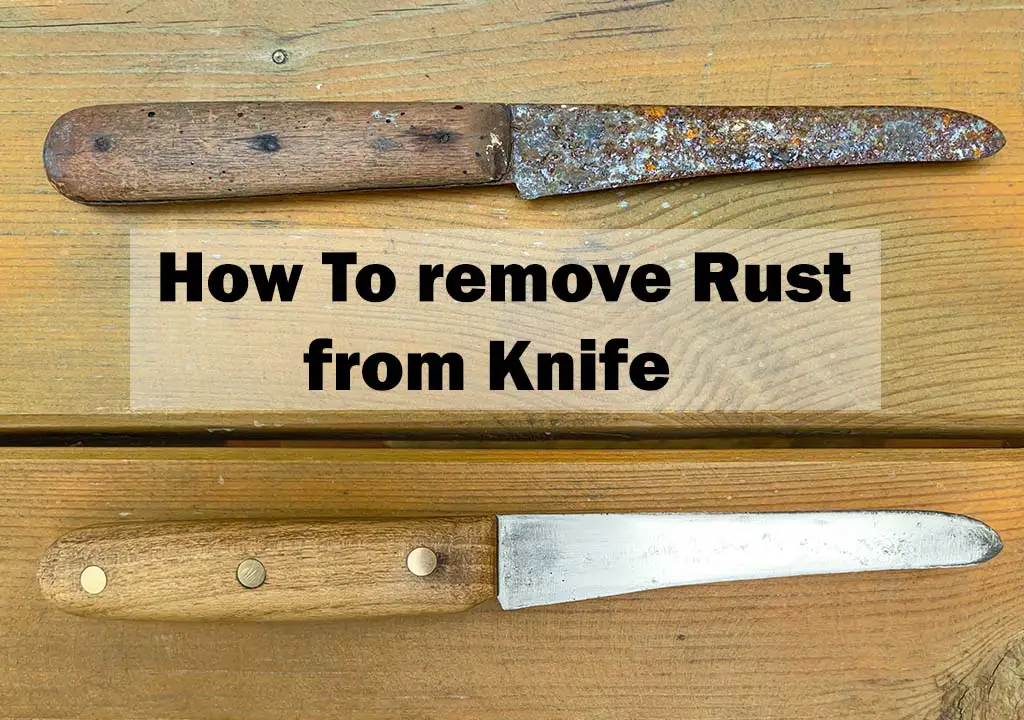How To Get Rust Off Knife Blade
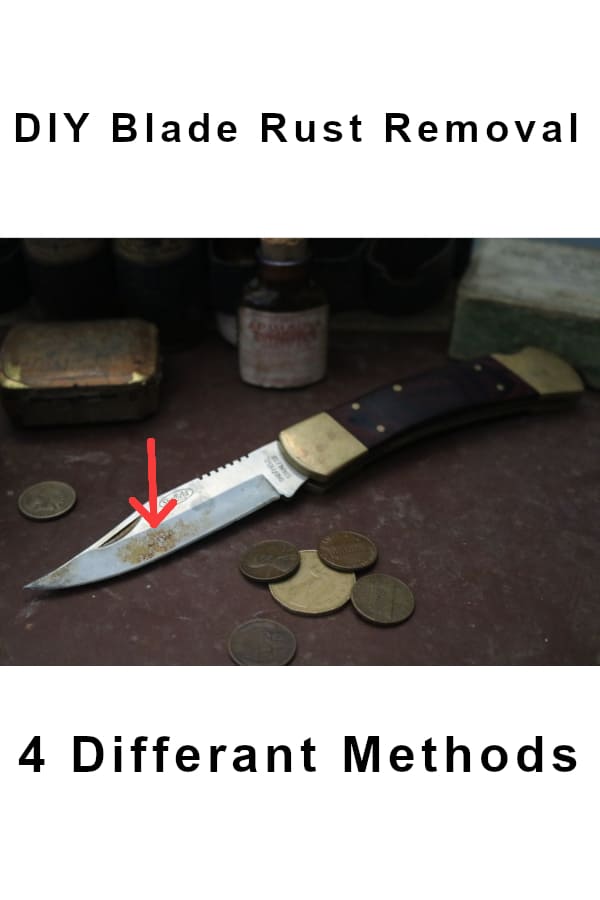
Imagine reaching for your trusty kitchen knife, eager to dice vegetables for a comforting stew. But instead of a gleaming blade, you're met with an unwelcome sight: a reddish-brown film clinging stubbornly to the steel. Rust, that insidious enemy of metal, has taken hold, turning a simple cooking task into a potential restoration project. It's a common frustration, but fear not, your cherished blade isn't destined for the trash heap.
This article serves as your comprehensive guide to tackling rust on your knife blades, offering a range of effective methods, preventative measures, and essential knowledge to keep your knives sharp, clean, and ready for any culinary adventure. Whether you're dealing with a delicate paring knife or a robust chef's knife, the principles remain the same: understanding the nature of rust and employing the right techniques to safely remove it.
Understanding the Enemy: What is Rust?
Rust, scientifically known as iron oxide, is the result of a chemical reaction between iron, oxygen, and moisture. This process, called oxidation, weakens the metal and creates the flaky, reddish-brown substance we recognize as rust. The presence of electrolytes, such as salt, accelerates the rusting process.
Knowing this allows you to be more strategic when cleaning your knife blades. Salt water, for example, should be cleaned off knife blades immediately to prevent rusting.
Assessing the Damage: Is it Surface Rust or Something More?
Before diving into rust removal, it's important to assess the extent of the corrosion. Surface rust, the most common type, is a thin layer that can be removed relatively easily. More severe rust, however, can penetrate deeper into the metal, potentially weakening the blade's structural integrity. If the rust is excessive or has caused pitting, you may need to consult a professional knife sharpener or consider replacing the blade.
You want to be able to identify the difference. This prevents you from investing too much into a knife blade that is too far gone.
Methods for Removing Rust: A Step-by-Step Guide
Here are several effective methods for removing rust from knife blades, ranging from gentle home remedies to slightly more abrasive techniques. Always start with the least aggressive method and gradually increase the intensity as needed. Safety first: Wear gloves and eye protection when working with cleaning agents.
Gentle Cleaning with Baking Soda Paste
Baking soda, a common household staple, is a mild abrasive that can effectively lift surface rust. Create a paste by mixing baking soda with water until you achieve a thick consistency. Apply the paste to the rusted areas of the blade and let it sit for 15-20 minutes. Gently scrub the blade with a soft cloth or sponge in a circular motion.
Rinse thoroughly with water and dry completely. Repeat as needed until the rust is removed. This is a great way to clean the blade while being gentle and keeping the blade in good condition.
Vinegar Soak
Vinegar's acidic properties make it an effective rust remover. Soak the affected knife blade in white vinegar for several hours, or even overnight for more stubborn rust. Check the blade periodically to monitor the progress. After soaking, scrub the blade with a non-abrasive pad or brush to remove the loosened rust.
Rinse thoroughly and dry immediately to prevent further corrosion. Remember, prolonged exposure to vinegar can damage the metal, so be sure to monitor the process closely. This is a great method to try when you want to leave the blade to soak. Just be sure to check often!
Lemon Juice and Salt
This combination uses both the acidity of lemon juice and the abrasive quality of salt to combat rust. Sprinkle salt generously over the rusted areas of the blade. Squeeze lemon juice over the salt, ensuring the affected areas are thoroughly saturated. Let the mixture sit for 2-3 hours. Scrub the blade with the lemon rind or a non-abrasive pad.
Rinse well and dry completely. The citric acid in lemon juice helps to dissolve the rust, while the salt acts as a gentle scrubbing agent. This method is great because it uses natural items you have at home.
Using a Rust Eraser
Rust erasers, also known as rust removal blocks, are specifically designed for removing rust from metal surfaces. These abrasive blocks come in varying grits, allowing you to tailor the cleaning process to the severity of the rust. Wet the rust eraser and the knife blade. Gently rub the eraser over the rusted areas, applying light pressure. Rinse the blade frequently to remove debris and monitor the progress.
Dry the blade thoroughly after use. Rust erasers are a popular choice for knife enthusiasts because they offer a controlled and effective way to remove rust without causing excessive scratching. These erasers are a good addition to any knife cleaning kit.
Steel Wool (Use with Caution!)
Fine-grade steel wool can be used to remove rust, but it's essential to proceed with caution. Steel wool can scratch the blade if used aggressively or if the grade is too coarse. Use very fine-grade steel wool (0000 grade) and apply light pressure. Work in the direction of the blade's grain to minimize scratching.
Apply a lubricant, such as mineral oil or WD-40, to the blade before scrubbing. Rinse thoroughly and dry immediately. Steel wool should be considered a last resort for stubborn rust that doesn't respond to gentler methods. Always be cautious when using this option!
Prevention is Key: Protecting Your Knives from Rust
The best way to deal with rust is to prevent it from forming in the first place. Here are some essential preventative measures to keep your knives rust-free:
- Wash and Dry Immediately: Never leave your knives wet, especially after cutting acidic foods or exposing them to salt water. Wash them immediately after use with warm, soapy water and dry them thoroughly with a clean towel.
- Oil Regularly: Applying a thin coat of food-grade mineral oil to the blade after cleaning helps to create a protective barrier against moisture.
- Proper Storage: Store your knives in a dry environment, such as a knife block, magnetic strip, or individual sheaths. Avoid storing them in drawers with other utensils, as this can cause scratches and damage.
- Avoid Dishwashers: Dishwashers are harsh environments for knives. The high heat, detergents, and prolonged exposure to water can accelerate rust formation. Always hand-wash your knives.
The Importance of Proper Knife Care
Caring for your knives is not just about aesthetics; it's about safety, performance, and longevity. A sharp, well-maintained knife is safer to use because it requires less force, reducing the risk of slipping and cutting yourself. Regular cleaning and rust prevention ensure that your knives perform optimally, allowing you to slice, dice, and chop with ease. Proper care also extends the life of your knives, saving you money and reducing waste in the long run.
A good knife is an investment. Treating your knife blades with care is a great way to extend their life.
A Final Sharpening Thought
Removing rust from a knife blade might seem like a daunting task, but with the right knowledge and techniques, it's a manageable process. Remember to assess the severity of the rust, choose the appropriate cleaning method, and always prioritize safety. More importantly, adopt preventative measures to keep your knives rust-free and in top condition. A little bit of care and attention will ensure that your knives remain reliable and valuable tools in your kitchen for years to come.
So, go forth, rescue those rusted blades, and rediscover the joy of using sharp, well-maintained knives in your culinary creations. Happy cooking!
